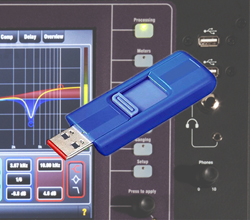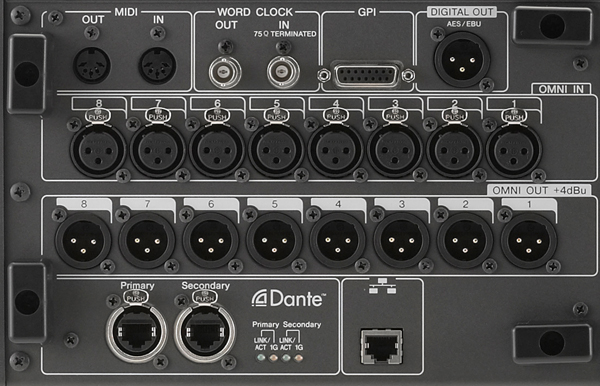
Further Tailoring
Another way to make a basic recording is to set up a mix either from aux buses or a matrix out. This can be a better option because it provides the ability to have a separate mix tailored specifically for the recording.
Many digital consoles offer AES and SPDIF digital 2-channel outputs that allow easy interfacing to stand-alone hardware recording devices while keeping the signal in the digital domain.
For example, with 6 stereo mixes and 4 stereo matrix buses available (plus 8 mono auxes), it’s a straightforward matter to set up a 2-track mix for recording on Soundcraft Si Series digital consoles, routed to the AES output for easy interfacing of stand-alone hardware recording devices. Another example is the Allen & Heath GLD 80, which offers 2-track recording to USB that is available from a variety of sources or the mix master, as well as a SPDIF digital output.
If you need more than two tracks but don’t have a multi-track recorder or DAW available, the Eclipe GT from Innovason offers a solution in the form of the M.A.R.S. option. It provides a built-in 64-track recorder that records directly onto a hard disk plugged into the back of the console.
Many digital consoles offer the ability to connect to a digital network. Some have their own proprietary network and others use open standard protocols. MADI protocol, which offers up to 64 channels, is a popular format used to transport audio to recording devices as well as in snake systems. Many digital systems offer MADI snakes and stand-alone recording devices like the Blackbox BBR64-MADI recorder from JoeCo that is designed to record and play back up to 64 channels of MADI data.

While the V-Mixer Series from Roland Systems Group uses proprietary REAC protocol for interconnection of mixers and stage boxes, there’s also the S-MADI REAC Bridge, a bi-directional signal converter between REAC and MADI that allows integration of recorders and other consoles into the network. In fact, you don’t even have to go to MADI to record on the REAC network because Roland also offers the R-1000, a stand-alone 48-track recorder/player designed to operate on REAC.
And, for an easy way to get MADI into and out of a computer, the UB MADI interface from DiGiCo can be used with any computer with a USB 2.0 port.
Talking The Talk
Another popular network format is Dante (from Audinate), and many consoles use it as a transport network and/or to provide interface options. Yamaha digital consoles are a good example of both.
The newest consoles from Yamaha Commercial Audio Systems, the CL Series, provide Dante connections as standard, and all of the company’s digital consoles can be outfitted with option cards that enable them to connect to a Dante network. (By the way, CL consoles offer 2-track recording by simply plugging a USB memory stick into the USB connector on the front panel of the console. No other equipment is required. Playback from the USB memory is possible as well in MP3, AAC, and WMA formats.)
Dante can also “talk” directly to many computer-based DAW programs as well as a stand-alone recorder like the JoeCo BBR64-DANTE. The new Avid S3L console uses the Ethernet AVB standard (by the way, Dante is AVB standard compliant) and can link directly to a computer running ProTools software or any other DAW, making connection for multi-track recording quick and easy.
What I’ve presented here is just the tip of the iceberg when it comes to recording options available with consoles primarily designed for live applications, and is intended to serve as a starting point to your own research. Suffice to say that we have a multitude of options available, and it’s only getting better on a regular basis.
Senior contributing editor Craig Leerman is the owner of Tech Works, a production company based in Las Vegas.
